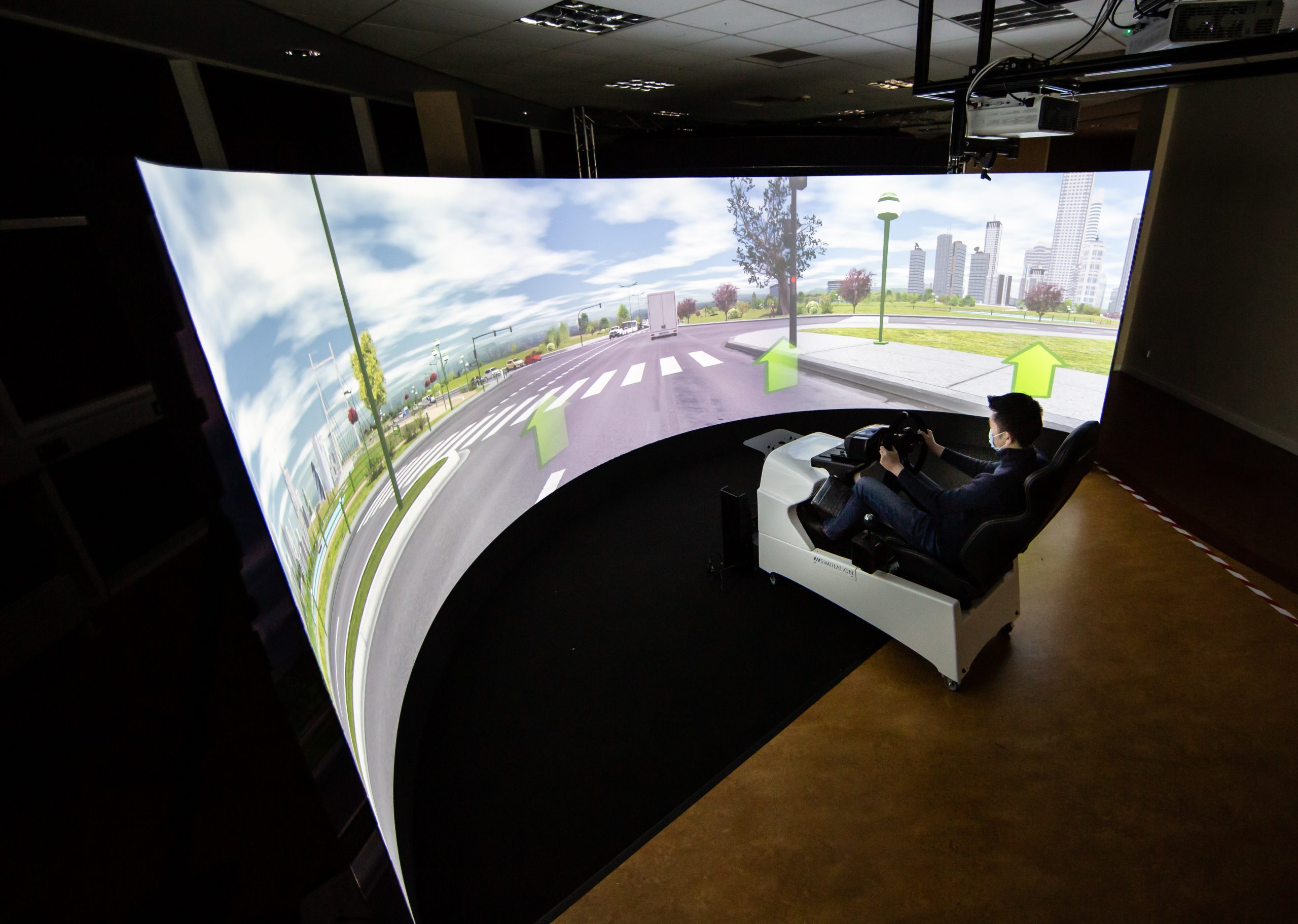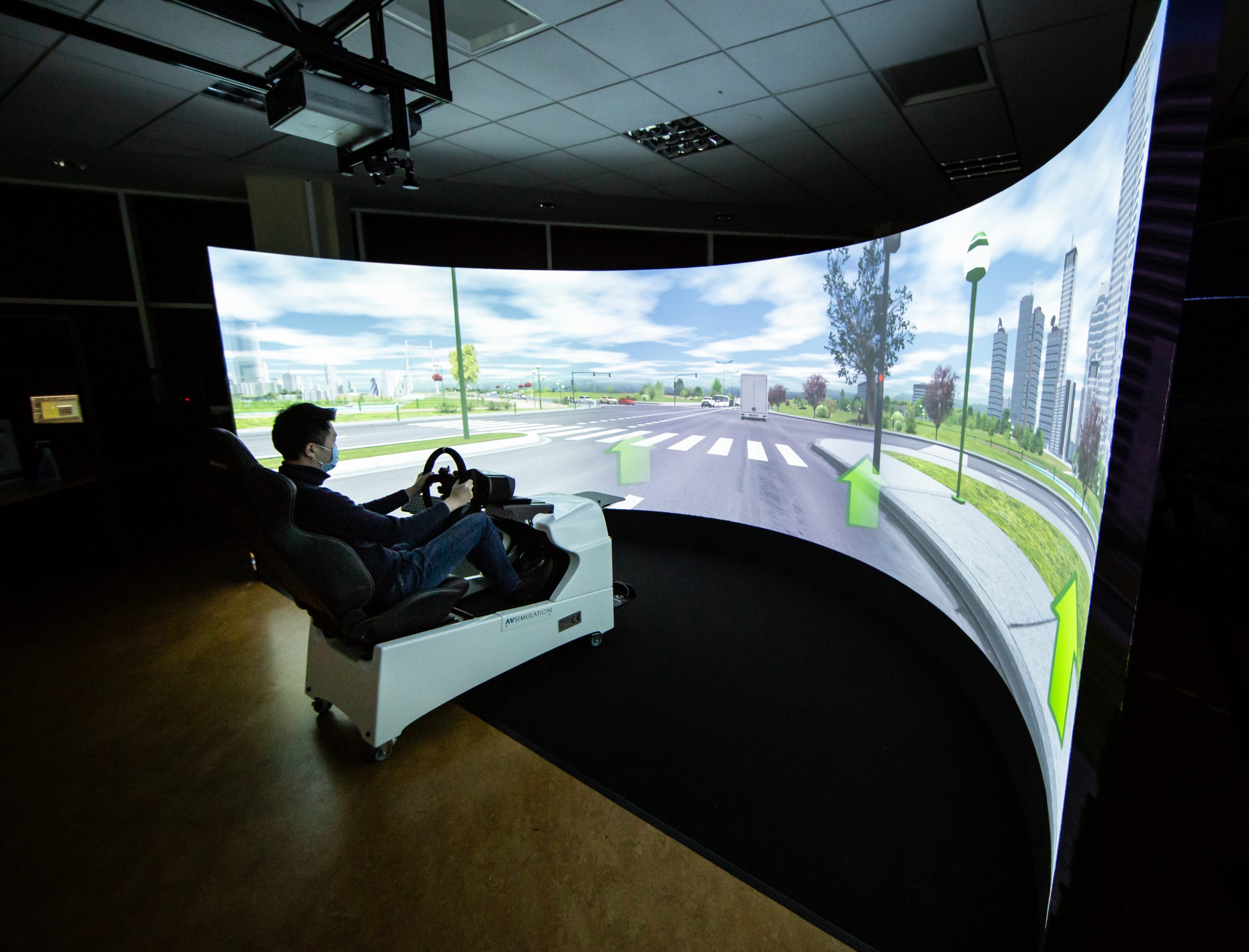Regulating the Future: Key Autonomous Vehicle Research Facilitated by ST Engineering Antycip
The company has provided simulation equipment and expertise to Cardiff University’s School of Psychology, which is currently undertaking ground-breaking work in the fields of autonomous driving and human / machine systems.Paris (France), 31st March 2021 – ST Engineering Antycip has once again put its technology at the forefront of cutting-edge research with the installation of a bespoke transport simulator at a special unit within the University of Cardiff’s School of Psychology.
This new simulator will allow the unit – which is a collaboration between the university’s schools of Engineering, Computer Science and Psychology – to conduct in-depth analysis and human-centric experimentation in order to investigate how humans perceive and interact with autonomous vehicles, such as self-driving cars.
The work is driven by an EU-funded body called Centre for Artificial Intelligence, Robotics and Human-Machine Systems (IROHMS), and is overseen by Professor Phil Morgan, IROHMS director of research.
“One thing we are interested in is how people attribute blame in an accident between people and autonomously driven cars,” said Morgan. “In order to look at this from a practical perspective, experiments using simulations and where possible (future) prototype AVs are crucial with surveys and the like to gather complementary data on subjective perceptions.”


This means measuring – both cognitively and emotionally – how humans behave with relation to autonomous transport, particularly during situation where blame can be attributed.
“In order to do this, we need to be able to simulate some situations that people can’t yet encounter in the real world and assess technology that isn’t fully developed. Moreover, this all has to be done in a safe setting. To our knowledge, there isn’t another driving simulator with such capabilities anywhere in Wales and we will be able to link ours with the few that do exist in the UK in other excellent research centres such as Bristol Robotics Laboratory.”
“We’d already heard lots of good things about ST Engineering Antycip through our colleagues in other institutions as well as the supplier of our driving sim software. They stood out from their competitors in the marketplace with their long track record of good services and high level of professionalism.”
“It was a bilateral conversation where we were able to give our requirements at the same time as listening to ST Engineering Antycip’s advice on the technical side of things,” said lecturer in human factors at Cardiff University, Dr Qiyuan Zhang. “Although the process took over a year, it was worthwhile as we knew that the finished product would be fit for purpose.”
ST Engineering Antycip’s commercial development manager, John Mould, said: “We have a long history of providing immersive display solutions for driving simulation purposes, so this is our bread-and-butter business. The university required a system that could operate within their specific room space and accommodate a future full-sized vehicle or driving simulation rig, so we used our expertise to understand the university’s price-performance requirements and delivered the perfect solution accordingly.”
ST Engineering Antycip provided three of the Canon XEED 500ST projectors with 0.56:1 lenses, which were used to map the surface of the display, delivering 5,000 lumens each at WUXGA resolution. The projectors were rigged from the ceiling using a custom mounting mechanical array. Video signals are passed from the Image generators via 15m HDMI cables, while the Ethernet for the projector communications is routed to each projector to allow full remote control.
While these components were relatively stock, the screen was totally bespoke. Mould explained: “We wanted a screen substrate that was inherently more stable than a standard tensioned fabric system, in order to reduce thermal and air-pressure effects within the room-space over time. We proposed a more artisan approach for the screen with a rigid structure offering good stability for the imagery that would be mapped upon its surface.
“Our technology partners and manufacturer, Visual Displays, were contracted to support this installation. They worked closely with our engineers and must have the credit for manufacturing the bespoke cylindrical screen surface to our outline specification.”
The digital correction of the content was to be taken care of using ST Engineering Antycip’s VIOSO VR & Simulation software, which offers automatic calibration technology and different options for how the calibration for the corrections is applied. The VIOSO implementation utilises a single specialist PoE camera with a 360×180 degree lens optics to ‘see’ the display surface, which would, in turn, allow for the client to recalibrate more easily in the future.
Although the finished product met the expected image quality and full functionality as proposed, the IROHMS team expressed the desire to improve the soft edge blending result to address night-time settings and to reduce the traditional ‘double intensity’ artefacts when displaying such content.
“It wasn’t possible to implement optical blending technologies to remove the unwanted light, so ST Engineering Antycip’s on-site engineers spent some additional time exploring the projectors’ own internal soft edge blending in combination with VIOSO geometry calibration to tune the projectors – where possible,” said Mould. “Thanks to our engineers’ tireless work in this regard, we were able to drastically improve the performance of the finished product.
The staff at Cardiff University were trained in the operation of the technology by ST Engineering Antycip during the acceptance, testing, and hand-over stages, and, as Mould explained: “The university have also been made aware that they can ad-hoc request our further support to help them should they encounter unforeseen difficulties with the system in the future.”
Although Covid restrictions have ensured that the IROHMS team will have to conduct their research online for the time being, they are looking forward to the chance when they can get the new simulator up and running in order to conduct this important research.
“The development of this technology needs to be informed by knowledge,” said Zhang. “We need to know how humans will respond to these things, and we need to ensure that the design of human-machine interfaces can accommodate humans’ limited cognitive capacity. The sheer functionality of a system is useless if humans can’t use it. First, we need to test what type of interface works better, then we need to use that to inform the development of new technology. The best way for us to do this is through simulation, and we are so pleased that we will soon be able to do that.”
Photos courtesy of IROHMS
“I believe 3WM Communications will add value to any organisation as they are able to provide a birds-eye view of what is happening in the industry and propose plans to benefit from a company’s competitive advantage over competitors.“
Contact Us
“We were quickly impressed with 3WM Communications and their international skills, their work and their dedication.
It is a real pleasure to work with them.”
